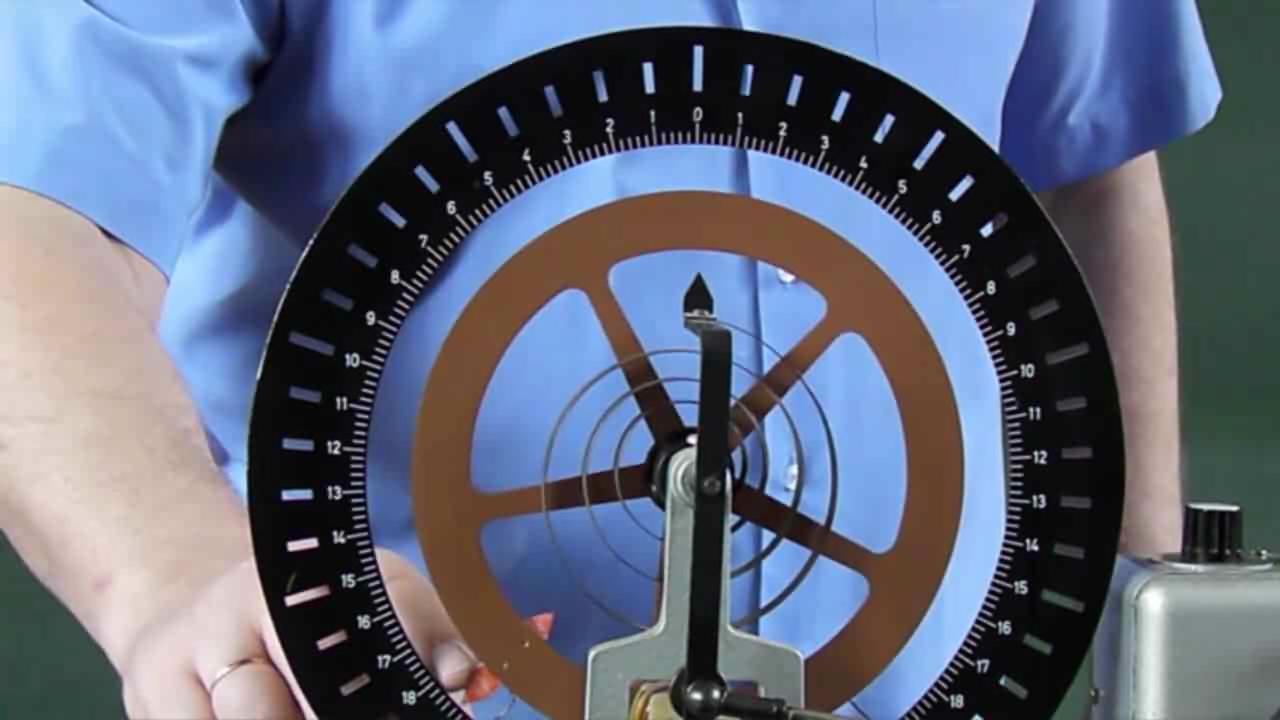„Szabad rezgés II.” változatai közötti eltérés
| 8. sor: | 8. sor: | ||
== Free Oscillations II. == | == Free Oscillations II. == | ||
| − | + | Let’s examine free oscillations with Pohl's pendulum! The equipment is a torsion pendulum composed of a rotating copper wheel connected to a torsion spring. Let us rotate the wheel through a large angle! This rotation only slightly deforms the torsion spring. The black scale concentric to the copper wheel shows the maximum amplitude with the help of a red indicator. We can observe that the dampening of successive oscillations is very small, not even as large as one percent. | |
</wikitex> | </wikitex> | ||
A lap jelenlegi, 2014. március 9., 13:23-kori változata
Az elhangzó szöveg
Pohl-féle torziós ingával vizsgáljunk szabad rezgést! A készülék egy csapágyazott küllős rézkorongból áll, amely spirálrugóhoz kapcsolódik. Térítsük ki a kereket nagy szöggel! Ez a kitérítés a spirálrugót csak kicsit deformálja. A rézkoronggal koncentrikusan elhelyezkedő fekete skálán a koronghoz erősített piros mutató segítségével leolvashatjuk a maximális kitérést. Megfigyelhetjük, hogy az egymást követő rezgések csillapodása csekély, az egy százalékot sem éri el.
Free Oscillations II.
Let’s examine free oscillations with Pohl's pendulum! The equipment is a torsion pendulum composed of a rotating copper wheel connected to a torsion spring. Let us rotate the wheel through a large angle! This rotation only slightly deforms the torsion spring. The black scale concentric to the copper wheel shows the maximum amplitude with the help of a red indicator. We can observe that the dampening of successive oscillations is very small, not even as large as one percent.
